New fast amphibious 4x4 vehicle to equip Chinese special forces
The Chinese company Shaanxi Baoji Special Vehicles Manufacturing Co., Ltd, a large manufacturer of light armored vehicles, presented an amphibious vehicle for the needs of the PLA’s special forces as part of a public-private partnership. This Chinese amphibious vehicle is a “clone” of an American one (or is it license-built?), the Panther developed by WaterCar for the leisure market (roughly USD 155,000 apiece) and relevantly proposed for military use by the Chinese, an example to follow by other armies.
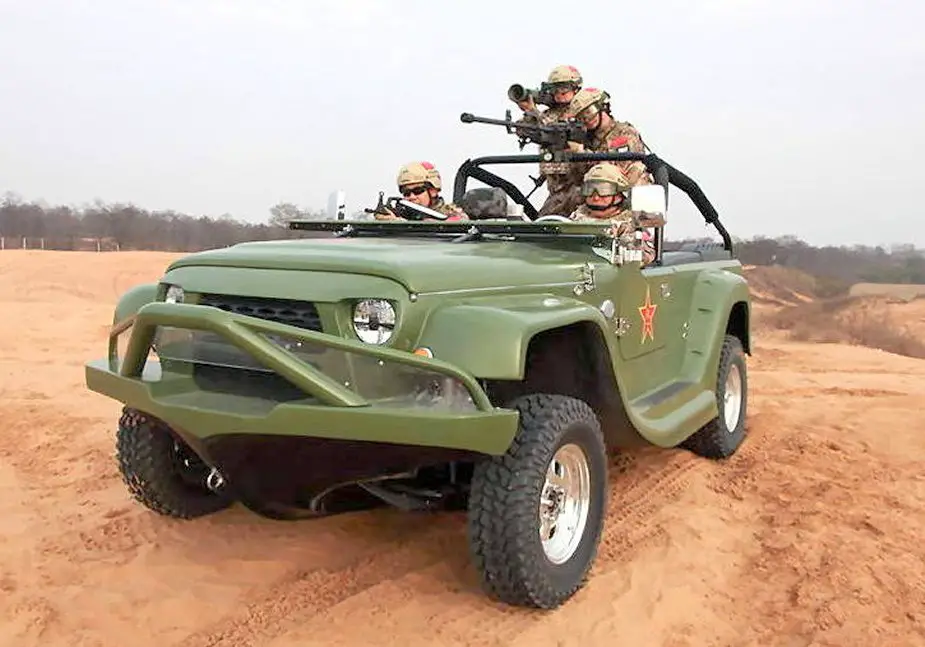
Fast amphibious vehicle cloned from WaterCar's Panther for the Chinese special forces (Picture source: Shaanxi Baoji Special Vehicles Manufacturing)
The use of amphibious light vehicles, all with 4x4 transmission, dates back to World War 2.

Porsche VW Typ 166 Schwimmwagen entering the water at the Grand Large lake (Belgium) in the framework of the annual "Tanks in Mons" gathering of World War 2 vehicles. The propeller must be manually lowered and connected to the transmission thanks to a rod stored above the silencer (Picture source: Alain HENRY de FRAHAN)
Porsche VW 128 and 166 Schwimmwagen
During World War 2, the Germans were the first to use amphibious cars for liaison purposes, anticipating lacks of bridging infrastructures in the territories to invade. So, Porsche developed its Volkswagen Schwimmwagen (swimming car) which used the engine and mechanicals of the VW Type 86 four-wheel drive prototype of the Kübelwagen and the Type 87 four-wheel drive 'Kübel/Beetle' Command Car, which in turn were based on the platform of the civilian Volkswagen Beetle. Erwin Komenda, Ferdinand Porsche's first car body designer, was forced to develop an all-new unitized bodytub structure since the flat floorpan chassis of the existing VW vehicles was unsuited to smooth movement through the water. Komenda patented his ideas for the swimming car at the German Patent Office.
The earliest Type 128 prototype was based on the full-length Kübelwagen chassis with a 240 cm (7.9 ft) wheelbase. Pre-production units of the 128, fitted with custom welded bodytubs, demonstrated that this construction was too weak for tough off-roading, had insufficient torsional rigidity, and easily suffered hull-ruptures at the front cross-member, as well as in the wheel-wells. This was unacceptable for an amphibious vehicle. The large-scale production models (Type 166) were therefore made smaller, and had a wheel-base of only 200 cm (6.6 ft).
VW Schwimmwagens were produced by the Volkswagen factory at Fallersleben / Wolfsburg and Porsche's facilities in Stuttgart; with the bodies (or rather hulls) produced by Ambi Budd in Berlin. 15,584 Type 166 Schwimmwagen cars were produced from 1941 through 1944: 14,276 at Fallersleben and 1,308 by Porsche. Given these numbers, the VW 166 is the most mass-produced amphibious car in history.
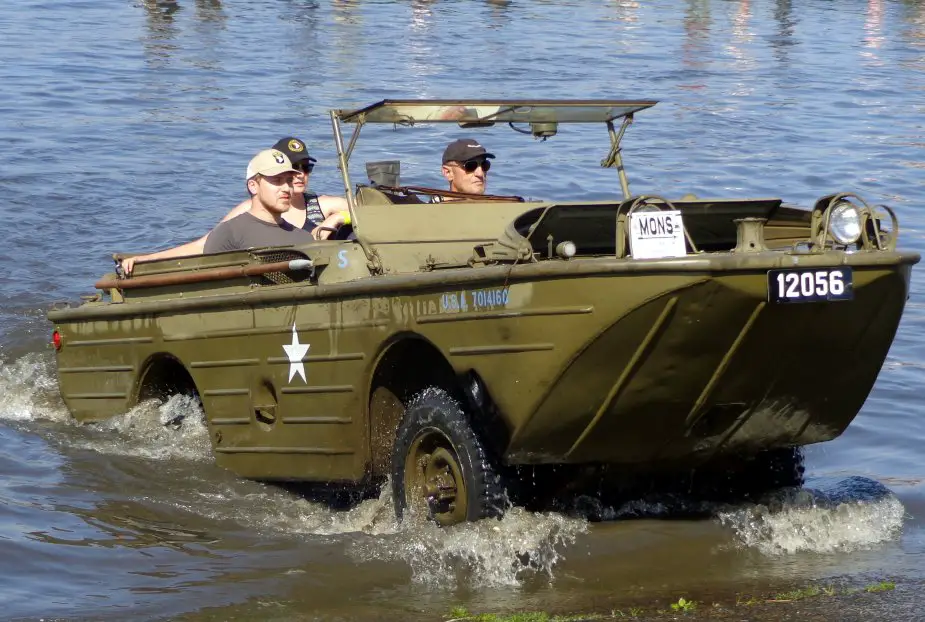
Ford GPA exiting the water at the Grand Large lake (Belgium) in the framework of the impressive annual "Tanks in Mons" gathering of World War 2 vehicles (Picture source: Alain HENRY de FRAHAN)
Ford GPA
For the same reason of a foreseen lack of bridging and port infrastructures, the USA developed two types of amphibious vehicles to be assigned to the U.S. Army, the USMC and the US Navy: the Ford GPA (General Pupose Amphibian) – the amphibious variant of the Ford GPW Jeep – and the GMC DUKW amphibious truck. Thousands of Ford GPAs (also nicknamed Seeps, for Sea Jeeps) were also delivered to the British army (which used them in the Burma campaign) and to the Soviet army in the framework of the Lend-Lease Act. The US forces used them both on the European and Pacific theaters of operations.
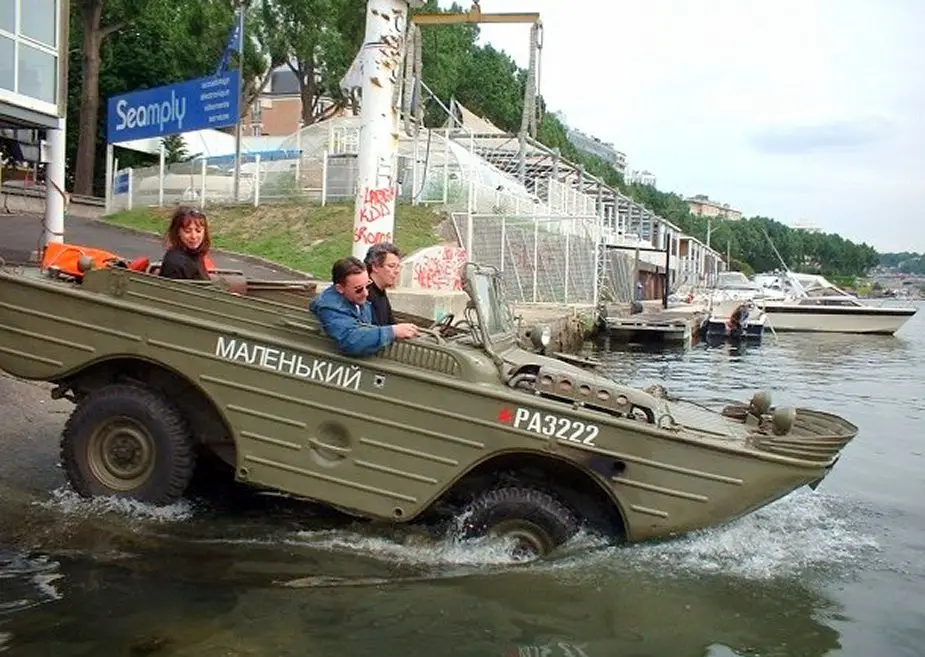
GAZ-46 MAV of a French collector entering the water in France (Picture source: UNIVEM)
GAZ-46 MAV
After World War 2, the Soviet brand GAZ produced an improved and slightly bigger version of the Ford GPA: the GAZ-46 MAV, built using the frame and parts of the GAZ-69 4x4 half-ton light truck, of which production started with the Gorki factory of 1952. The principal functions of the GAZ-46 MAV were to make light work of crossing lakes and rivers for men and materials, as well as performing river reconnaissance. As of the end of the 50s, the latter role became reserved for the BRDM-1, a much more powerful 4x4 amphibious vehicle. It entered service in the 1950s and was used by many Eastern Bloc allied forces.
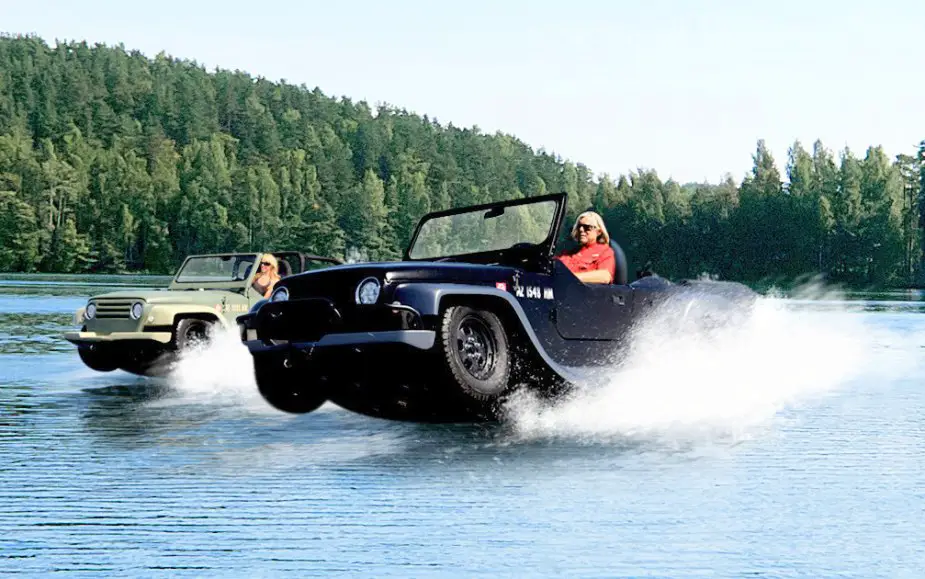
WaterCar "Panther" (Picture source: WaterCar)
WaterCar "Panther"
Builders of “The Most Fun Vehicle on the Planet!”. In 1999, WaterCar started as a personal challenge to build the world's fastest amphibious vehicle. The WaterCars were purpose-built vehicles, to be very fast on both land and water. After January, 2010, when WaterCar established the Guinness amphibious speed record with its Python model, the company’s attention turned to reliability and began designing a vehicle to offer to the public. Fourteen years, countless successes and failures, 27 patents and untold labor hours later, this challenge has been achieved.
The Panther, the first WaterCar to be offered to the public, was created by the company’s WaterCar team which is made up of top designers and technicians from around the world. Throughout the Panther's development, the commitment was to engineer a versatile amphibious vehicle built with proven off-the-shelf components that are recognizable throughout the automotive and marine industry. Ther WaterCar team has achieved that goal.
Main technical features: 65 mph on land / 45 mph on water, pumps 1,050 gallons per minute, transitions from land to sea in less than 3 seconds, US Coast Guard approved. What is missing on this vehicle for military use, mostly by special forces, is a winch (or at least a capstan, like on the Ford GPA) for self-recovery or exit from a muddy or too steep river bank.
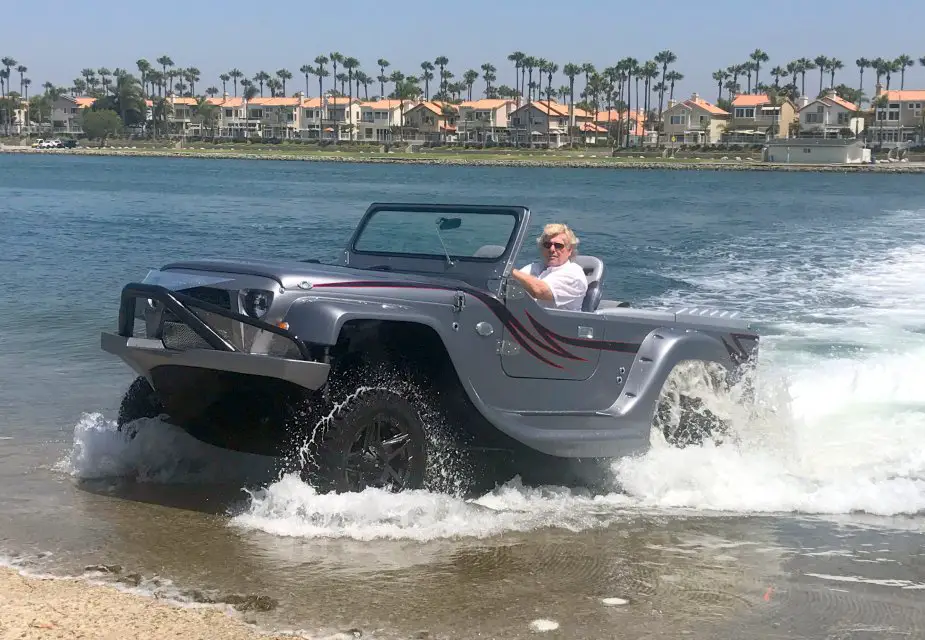
WaterCar "Panther" exiting the water after lowering its wheels (Picture source: Panther)


























